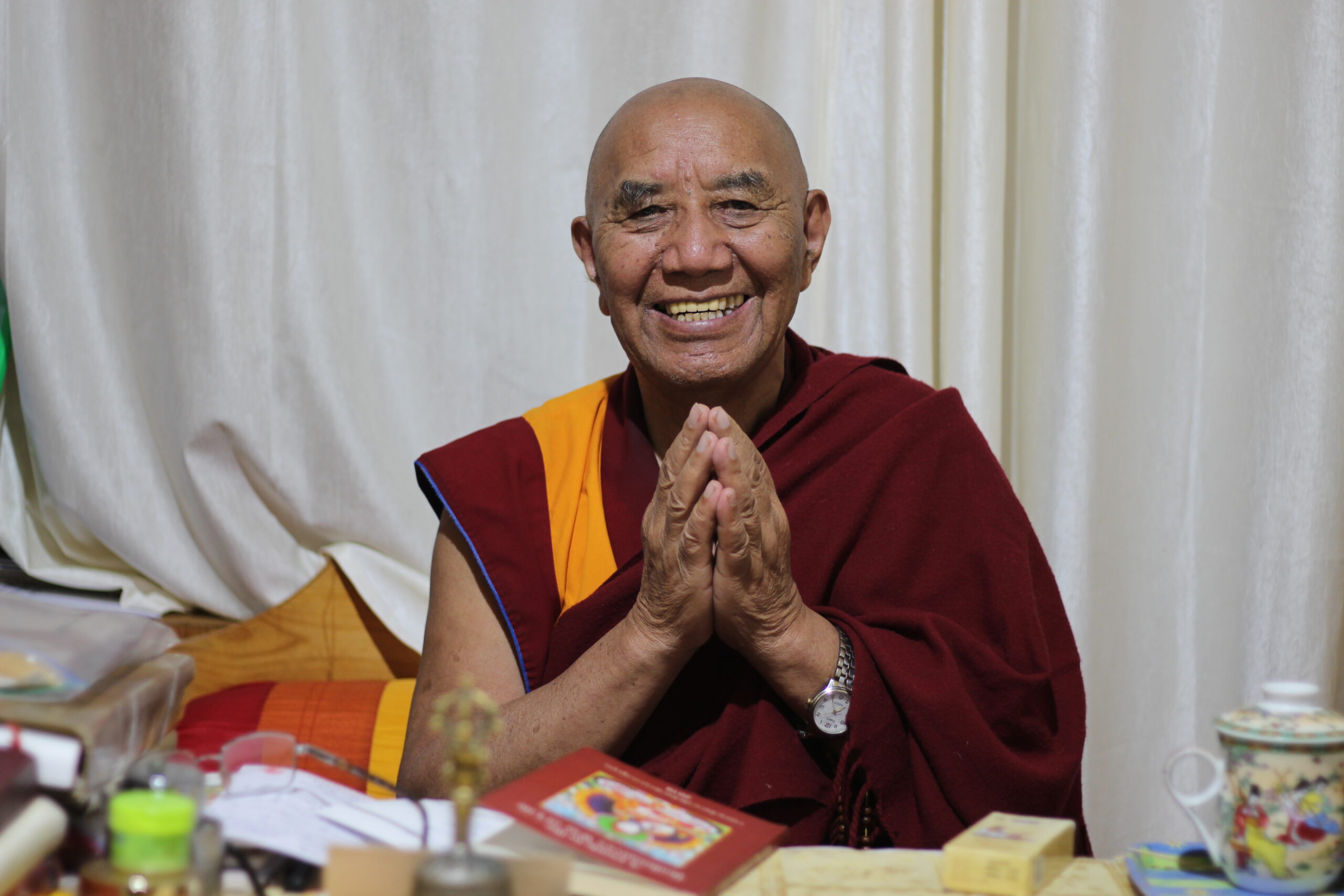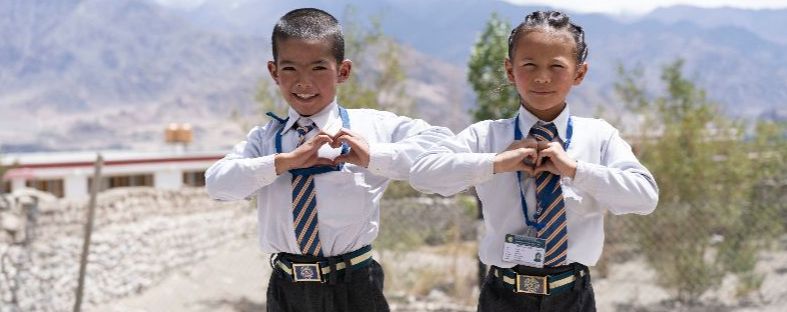Courage, power, and intention are on our minds this week as we prepare for a special event with our partner, the Rubin Museum of Art in NYC on Wednesday, March 6. The striking portrait of Lha Lung Pal Ki Dorje by a Siddhartha graduate is a potent symbol of bravery for many Ladakhi youth. Below is his essay on this remarkable figure in Tibetan Buddhist history, and our special invitation to learn more about this hero’s connection to Ladakh’s festivals and oracles.
—Editor
“Courage is not simply one of the virtues,
but the form of every virtue at the testing point.”

Art by Siddhartha School graduate Stanzin Sherap, for the Heroes Elevate Empathy Project.
Lha Lung Pal Ki Dorje is the name of my hero. He is the Black Hat dancer in the chams ritual dance. In Buddhism, it is said that one can attain enlightenment in two important ways. One is the Sutra (Buddhist text) study, and the other is Tantric text study and practice. The Black Hat dance is mostly performed by Tantric followers and they have special teachers who help students progress using rituals and meditations. At one time, Tantra practice was threatened during King Lang Dharma’s reign; he tried to eliminate all the rituals and texts, but his efforts did not live long, as my hero, Lha Lung Pal Ki Dorje, came with the black hat and killed him, even though he knew of the bad karmic results. He sacrificed so Buddhism could stay alive. Due to that today, we can still enjoy the study of Tantric Buddhism. My hero is the best.

“I will never give up, whatever hindrance comes my way. I will always keep moving forward. My parents are so thankful to you and we will never forget your kind deeds.”
–Excerpt taken from Stanzin Sherap’s letter to his American sponsor, Ben Abbott of Tulsa, Oklahoma.
“Oracles and Festivals: Setting Communal Intention in a Ladakhi Monastery”—Himalayan Heritage Event
The Rubin Museum: March 6

Join us March 6 in New York City at 6:30 p.m. for a very special conversation and guided meditation with a lama of the Nyingma tradition in the Rubin Museum’s Shrine Room. This event is brought to you by Siddhartha School Project and the Rubin Museum’s Himalayan Heritage Program with special guests Khenpo Sangye Wangdi, abbot of the Namdroling Monastery in Bylakuppe, India, SSP’s own Stanzin Dawa, and school co-founder Laura Kozaitis. The SSP community is exclusively invited to use the promo code SIDDHARTHA for a $5 discount. Hurry, as space is limited for this unique event and filling up fast!


Photo: Tibetan Buddhist monks perform a Black Hat dance during Monlam at the Labrang Monastery, Xiahe County, Amdo, Tibet. Photo credit: Kevin Frayer.
Fun Fact:
The full story on the Black Hat Tantric ritual: Lha Lung Pal Ki Dorje, a ninth-century legendary Buddhist assassin, lays bare his fierce courage to sacrifice his own life and, perhaps, future karma for the religious freedom of the Tibetan people.
Lha Lung Pal Ki Dorje was both a devout Buddhist disciple and the calculated killer of Tibet’s ninth-century king Lang Dharma, a fierce persecutor of Tibet’s emerging Buddhist population. According to popular accounts, as King Lang Dharma’s anti-Buddhist campaign drove many monks westward, many found safe haven in Ladakh. Those Buddhists who remained in Tibet were forced underground, and as the situation became more grave, Lha Lung Pal’s faith and courage were put to a dramatic test.
Watch the Black Hat Dance Being Performed by the Gangjong Dhoegar Dance Troop
Lha Lung Pal went to Lhasa wearing a black hat and long cloak in which he concealed a bow and arrow. There he danced in front of the king in an attempt to portray the suffering of the people under his rule. And while dancing, he retrieved the weapon from his long cloak sleeve and took his shot.
Pandemonium broke out, and Lha Lung Pal took off on a his horse, which had been painted black with soot. Once it crossed the waters of the river, the animal was washed clean and white. Lha Lung Pal also reversed his robe, leaving the white lining face out, and outwitted the king’s men as they rode past him searching for a black figure on a dark horse.
Did Stanzin Sherap’s hero believe that there would be karmic consequences for taking a human life? As a devout Buddhist, it is likely Lha Lung Pal Ki Dorje took up this dangerous and dreadful deed as a personal sacrifice, accepting these karmic consequences for the greater good of Tibetan Buddhist society. To this day, the Sha-Nak (Black Hat dance) reenacts his story.


